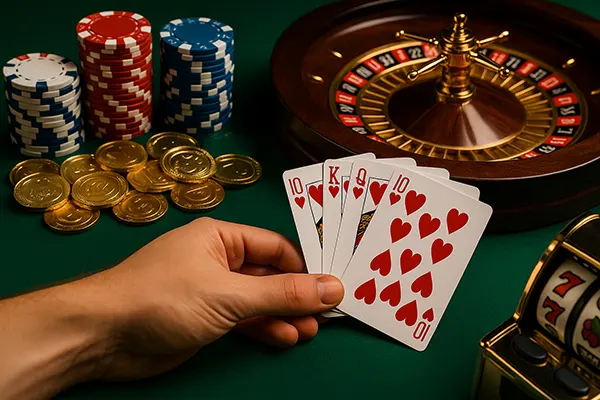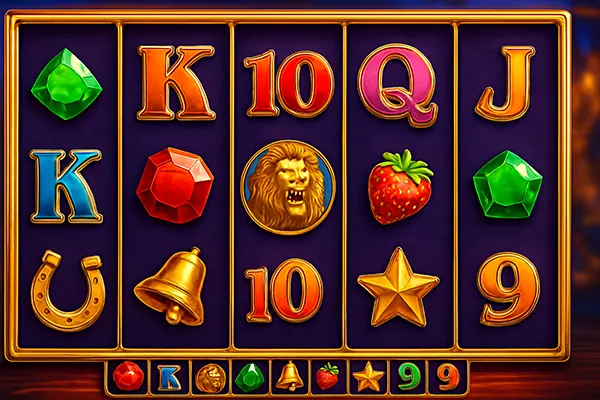
How to Detect Bluffing in Live and Online Poker?
Poker is a game of skill, strategy, and psychological warfare. One of the most crucial skills a player can develop is the ability to recognise when an opponent is bluffing. Bluffing is an integral part of poker, and distinguishing between genuine strength and deception can significantly improve a player’s chances of success. In this article, we will explore how to detect bluffing in both live and online poker, highlighting key tells and strategies to counter deception.
Understanding Bluffing in Poker
Bluffing is a tactic used by players to make their opponents believe they have a stronger hand than they actually do. This strategy is essential for keeping opponents uncertain and gaining an advantage at the table. However, experienced players know how to read bluffs effectively.
In live poker, bluffing relies heavily on physical tells, betting patterns, and psychological manipulation. Players use their body language, facial expressions, and even voice tone to mislead their opponents. Recognising these signals can help in identifying a bluff.
Online poker, however, eliminates physical tells, making it more challenging to detect deception. Instead, players must rely on timing, bet sizing, and opponent behaviour over multiple hands. Understanding these differences is crucial for adapting to both formats.
Types of Bluffs and Their Execution
There are different types of bluffs, each serving a specific purpose. The semi-bluff, for instance, involves betting on a hand that is not yet strong but has the potential to improve. This is common with drawing hands, such as flush or straight draws.
A pure bluff, on the other hand, is a bet made with a completely weak hand, relying solely on the opponent folding. This type of bluff is riskier, but when executed correctly, it can be highly effective.
Players also employ continuation bets (c-bets) to maintain aggression after the flop, regardless of hand strength. Recognising when an opponent is making a c-bet with a weak hand can help counter their strategy.
Reading Physical Tells in Live Poker
Live poker provides numerous opportunities to detect bluffs through physical cues. Observing an opponent’s body language and facial expressions can reveal nervousness or uncertainty.
One of the most common physical tells is a sudden change in breathing patterns. Bluffing players often exhibit shallow or erratic breathing due to stress. Similarly, excessive blinking or avoiding eye contact may indicate deception.
Hand movements and betting gestures can also be revealing. Players who hesitate before betting or use exaggerated motions to place chips may be trying to appear confident while bluffing. Analysing these microexpressions can provide valuable insight.
Verbal Cues and Psychological Tactics
Verbal tells are another crucial aspect of detecting bluffs in live poker. Players who talk excessively during a hand may be attempting to distract or convince opponents of their strength.
Conversely, sudden silence from an otherwise talkative player can indicate nervousness or uncertainty. Changes in speech patterns, tone, or hesitation before responding to questions should be noted.
Psychological tactics such as reverse psychology—where a player pretends to be weak when they are strong—are common. Understanding these tricks and remaining composed can prevent falling into an opponent’s trap.

Identifying Bluffing in Online Poker
Without physical tells, online poker requires players to rely on betting patterns and timing. One of the most common indicators of bluffing is inconsistent bet sizing. Players who suddenly place unusually large bets may be trying to force a fold.
Timing is another important factor. Players who take too long to act may be deliberating on a bluff, while those who instantly place a bet may be using aggression to compensate for a weak hand.
Another key strategy is tracking an opponent’s history. If a player frequently bluffs in similar situations, it becomes easier to call them out. Using poker tracking software can help analyse patterns and exploit weaknesses.
Counteracting Bluffs and Developing a Solid Strategy
Once a player has identified a potential bluff, they must decide on the best response. One effective tactic is the check-raise, which forces an opponent to commit more chips and reveal their true strength.
Slow playing, where a player acts passively with a strong hand, can also be used to trap aggressive bluffers. By allowing the bluffer to dictate the pace, a well-timed raise can extract maximum value.
Adapting to opponents and adjusting playstyle accordingly is crucial. Mixing up strategies and not becoming predictable will prevent others from easily reading one’s play and countering bluffs effectively.



